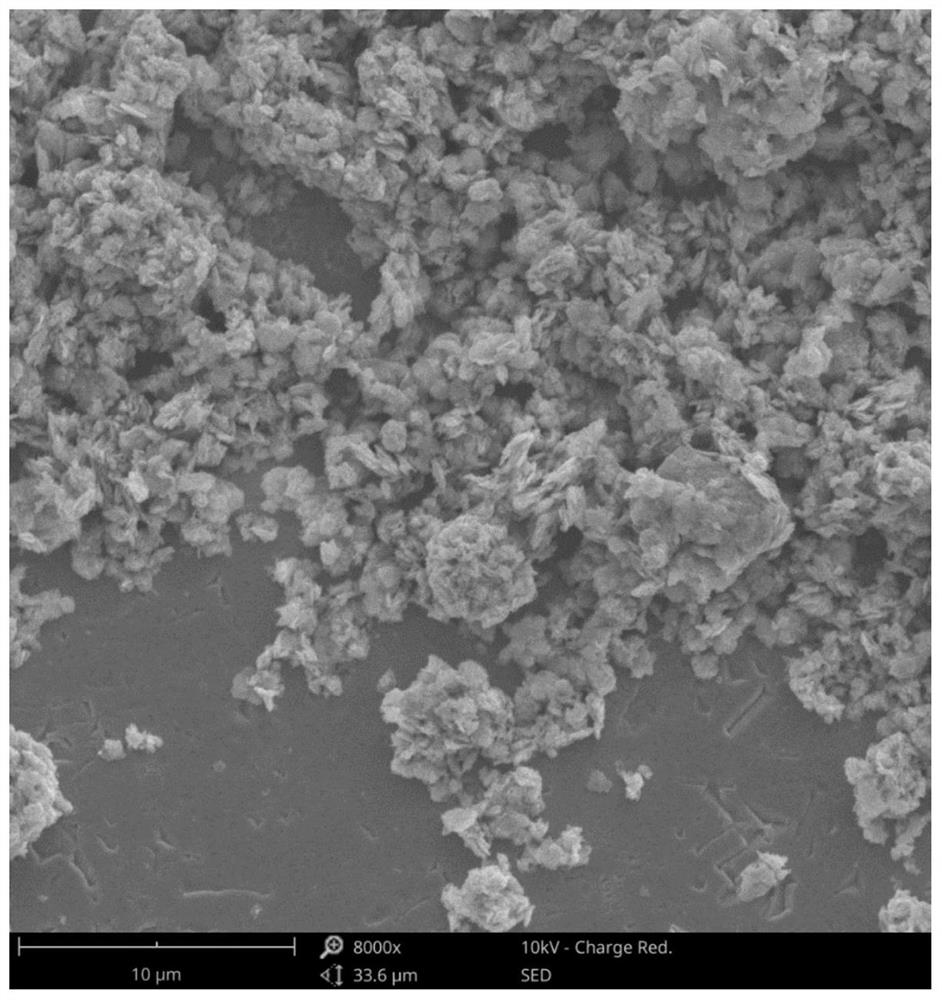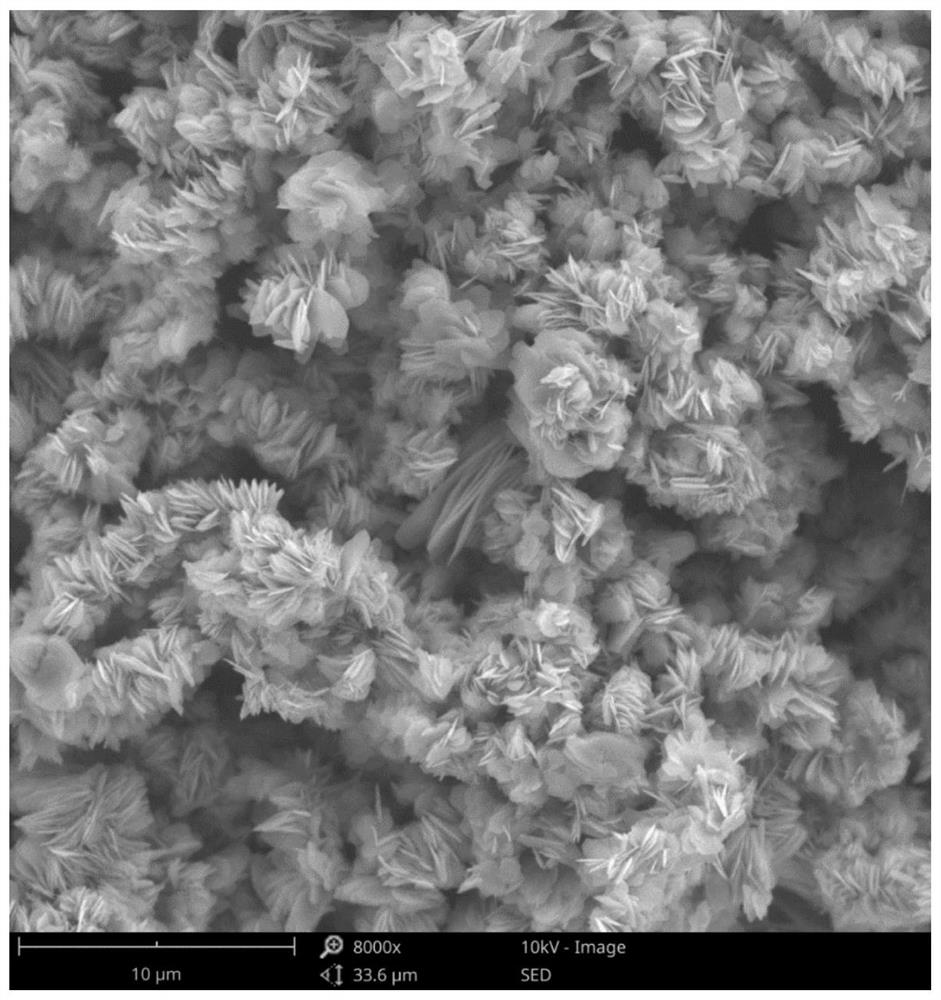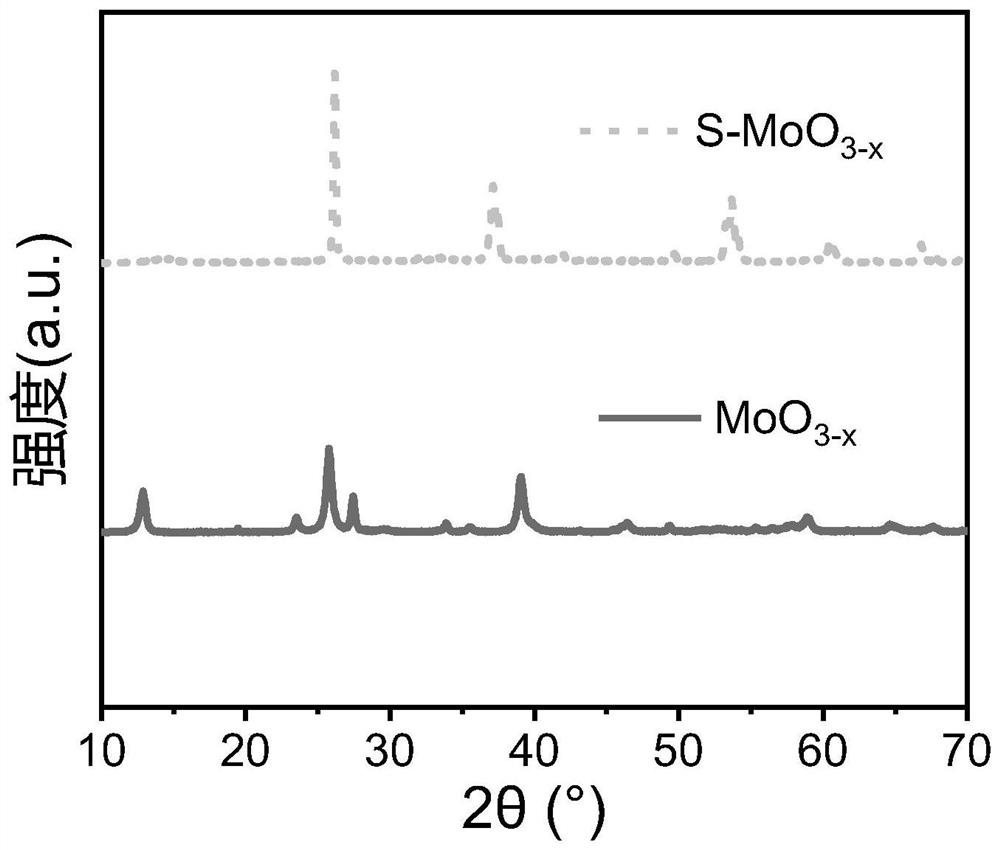Sulfur-doped oxygen-vacancy-containing molybdenum trioxide material and method for electrochemical reduction treatment of chloramphenicol
A molybdenum trioxide and sulfur doping technology, applied in chemical instruments and methods, water/sewage treatment, water/sludge/sewage treatment, etc., can solve the problems of hydrogen evolution side reaction, rare environmental pollutants, insufficient electrical conductivity, etc. , to achieve the effect of good conductivity, high reduction activity and wide pH application range
- Summary
- Abstract
- Description
- Claims
- Application Information
AI Technical Summary
Problems solved by technology
Method used
Image
Examples
Embodiment 1
[0049] (1) S-MoO 3-xPreparation: Disperse 38.4 mg of molybdenum powder in 48 mL of ethanol, add 6 mL of 30% (mass fraction) hydrogen peroxide solution and stir for 30 minutes, put it into a high-pressure reactor, and react under high temperature and high pressure at 160 ° C for 12 hours, and the obtained material is washed and dried with ethanol Then mix it with sulfur powder at a mass ratio of 1:1, bake at 500°C for 4 hours under a nitrogen atmosphere, and grind to obtain S-MoO 3-x powder.
[0050] (2) Sulfur-doped molybdenum trioxide electrode (S-MoO 3-x / CP) preparation: prepare S-MoO with ethanol and water at a volume ratio of 1:4 3-x The dispersion liquid of the material was evenly dropped on the washed and dried carbon paper (CP), and dried naturally as the cathode material.
[0051] (3) Electrochemical reaction: add sodium dihydrogen phosphate and disodium hydrogen phosphate in the aqueous solution containing chloramphenicol, control reaction solution is neutrality (...
Embodiment 2
[0061] Regulate the pH value of electrolytic solution to be 6.0, and other implementation conditions are with embodiment 1, see in three hours to the removal effect of chloramphenicol Figure 7 , the dechlorination effect within three hours is shown in Table 2.
Embodiment 3
[0063] Regulate the pH value of electrolytic solution to be 9.0, and other implementation conditions are with embodiment 1, see in three hours to the removing effect of chloramphenicol Figure 7 , the dechlorination effect within three hours is shown in Table 2.
[0064] The dechlorination rate of table 2 embodiment 1~3, comparative example 1~2
[0065] implementation plan Chloride ion removal rate% within three hours Example 1 48.8 Comparative example 1 7.4 Comparative example 2 25.6 Example 2 90.9 Example 3 38.9
[0066] Depend on figure 1 , 3, 4, 5 shows that S-MoO 3-x The material has a lamellar structure, rich in oxygen vacancies, and the sulfur element is successfully doped, its crystal phase is changed, and the main crystal plane (210) is retained. Depend on Figure 6 It can be seen that MoO 3-x The activity of catalyzing the reduction of chloramphenicol is significantly higher than that of the blank CP electrode, and 8...
PUM
| Property | Measurement | Unit |
|---|---|---|
| concentration | aaaaa | aaaaa |
| quality score | aaaaa | aaaaa |
Abstract
Description
Claims
Application Information
 Login to View More
Login to View More - R&D
- Intellectual Property
- Life Sciences
- Materials
- Tech Scout
- Unparalleled Data Quality
- Higher Quality Content
- 60% Fewer Hallucinations
Browse by: Latest US Patents, China's latest patents, Technical Efficacy Thesaurus, Application Domain, Technology Topic, Popular Technical Reports.
© 2025 PatSnap. All rights reserved.Legal|Privacy policy|Modern Slavery Act Transparency Statement|Sitemap|About US| Contact US: help@patsnap.com



